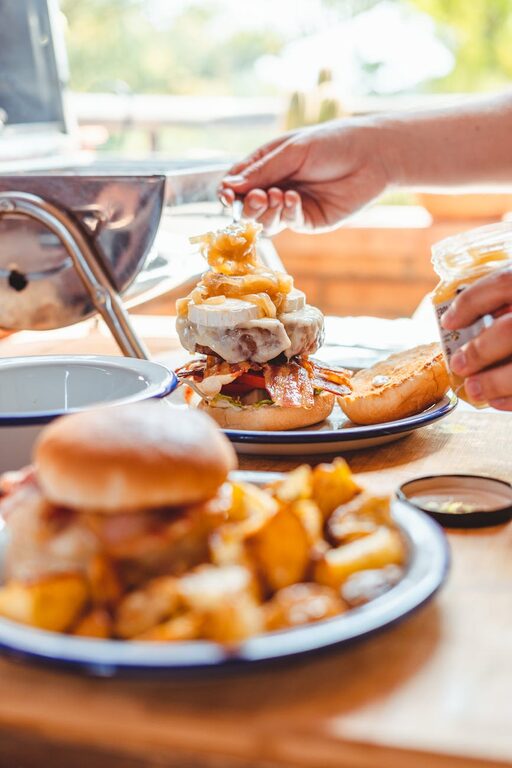How to Plan Meals Using Pantry Staples for Easy, Delicious Cooking

Planning meals from pantry staples can transform the way you cook at home. With a well-stocked pantry and a little creativity, you can prepare satisfying meals without a last-minute trip to the store. This approach saves time, reduces food waste, and helps you eat more economically. In this blog post, we’ll explore practical steps to help you plan meals from pantry essentials, making cooking simpler and more enjoyable.
Why Plan Meals from Pantry Staples?
Pantry staples are durable ingredients that have a long shelf life, such as canned goods, dried grains, pulses, and spices. When you base your meals around these items:
– You save time since you don’t need to shop as often
– You cut costs by making the most of what you already have
– You reduce food waste by using up stored ingredients
– You gain flexibility to adapt meals based on what’s available
By developing a routine around pantry staples, you can turn simple ingredients into nutritious and tasty dishes.
Step 1: Stock Your Pantry with Essential Staples
Before you can plan meals around your pantry, it’s important to have a good variety of staples on hand. Here are some must-have items:
Grains and Pasta
– Rice (white, brown, or wild)
– Pasta (various shapes)
– Quinoa or couscous
– Rolled oats
Canned and Jarred Goods
– Beans (black, chickpeas, kidney, etc.)
– Canned tomatoes (whole, diced, or crushed)
– Broth or stock (chicken, beef, vegetable)
– Coconut milk
Baking and Cooking Essentials
– Flour (all-purpose, whole wheat)
– Baking powder and baking soda
– Sugar (white, brown, or alternative sweeteners)
– Cooking oils (olive oil, vegetable oil)
– Vinegars (white, apple cider, balsamic)
Spices and Herbs
– Salt and pepper
– Garlic and onion powder
– Dried herbs (oregano, basil, thyme)
– Ground spices (cumin, paprika, chili powder)
Other Useful Items
– Nut butters (peanut, almond)
– Soy sauce or tamari
– Honey or syrup
– Dried fruits and nuts
Keeping these basics organized and easily visible makes it quicker to plan meals.
Step 2: Assess What You Have
Take a few minutes to inventory your pantry. Group items by category or meal type to see what’s available and what might expire soon. This step helps you avoid buying duplicates and inspires meal ideas based on what you already have.
Step 3: Choose Your Meal Themes
Having a meal theme simplifies planning. Consider categories like:
– Pasta night: Use canned tomatoes, pasta, herbs, and canned beans
– Soup day: Combine broth, vegetables (fresh or frozen), grains, and spices
– Rice bowl: Pair cooked rice, beans or lentils, and a flavorful sauce
– Stir-fry: Use soy sauce, rice or noodles, canned vegetables, and spices
– Baked goods: Muffins, pancakes, or breads using flour, baking powder, and sweeteners
With these themes, you can mix and match ingredients to keep meals interesting.
Step 4: Plan Meals Based on Key Ingredients
Select one or two main pantry staples as the base for each meal. Then think about what flavors and fresh ingredients you can add.
Example: Chickpea Curry
– Base: Canned chickpeas, coconut milk, canned tomatoes
– Spices: Curry powder, garlic, onion powder
– Add fresh: Spinach or kale, rice on the side
Example: Pasta with Tomato Sauce and Beans
– Base: Pasta, canned tomatoes, canned beans
– Spices: Italian herbs, salt, pepper
– Add fresh: Grated cheese, garlic, fresh herbs
Example: Lentil Soup
– Base: Dried or canned lentils, broth
– Veggies: Carrots, onions (fresh or frozen)
– Spices: Bay leaves, cumin, pepper
Thinking this way turns pantry staples into complete meals with minimal fresh items needed.
Step 5: Incorporate Fresh and Frozen Foods
While pantry staples create the foundation, fresh or frozen ingredients enhance flavor and nutrition. Consider adding:
– Fresh vegetables like onions, garlic, carrots, leafy greens
– Fresh herbs like parsley or basil for flavor
– Frozen vegetables for convenience and variety
– Eggs or dairy products for added protein
Using these in combination with pantry basics keeps meals balanced and vibrant.
Step 6: Keep Meal Prep Simple
When cooking from pantry staples, simple preparation methods work best. Here are some tips:
– Use one-pot or sheet-pan recipes to save time on cleanup
– Cook grains and legumes in bulk to use throughout the week
– Prepare sauces or dressings ahead to add flavor quickly
– Utilize slow cookers or instant pots for hands-off cooking
Meal prep becomes easier and faster with these strategies.
Step 7: Get Creative and Experiment
Don’t be afraid to mix and match different staples and seasonings. Try substituting ingredients, such as swapping black beans for chickpeas, or using quinoa instead of rice. Experimenting helps you discover new favorite meals and avoid boredom.
Bonus Tips for Successful Pantry Meal Planning
– Keep a running list: Track what staples you use often to replenish them before they run out
– Rotate your stock: Place new purchases behind older ones to avoid spoilage
– Label and date: Mark cans and jars with purchase or expiration dates
– Use recipes and apps: Many websites and apps help you find recipes based on ingredients you have at home
Conclusion
Planning meals from pantry staples is an excellent way to streamline your cooking routine, save money, and reduce food waste. By stocking essential ingredients, getting familiar with your pantry, and pairing staples with fresh foods, you can create delicious and wholesome meals any day of the week. Try these steps to get started, and enjoy the convenience and satisfaction of cooking from your pantry.
Happy cooking!




